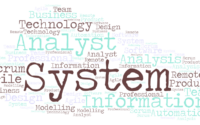Basic approaches to Reengineering
The three basic approaches to reengineering are as follows –
1. STREAMLIING
2. INTEGRATING
3. TRANSFORMING
1. Streamlining – Streamlining approach to reengineering the business offers a basic, segmented, quick-fix methodology for reengineering. It cleans up and treats symptoms but doesn’t necessarily transform a process nor find a cure for a bad process. It doesn’t change the way a company conducts its core business nor does it impose whether certain processes should exist at all. For eg: while reengineering an accounts payable process, we may reduce the staffs from the existing number to 7. If we follow a thorough transformation approach, this would require total number of 17 sign offs. The streamlining approach of reengineering the accounts payable process may also increase the level of spending authorization for managers. Another approach would be to translate the current workflow and dataflow via electronic means such as EDI. In essence, the streamlining approach to reengineering is simple, functional and makes operations go faster or better.
2. Integrating – The integrating approach to reengineering integrates discrete business processes, replacing them with a unified process that frequently cut across functions and department responsibilities i.e, it creates a process based organization of workflows within the reengineered process. For eg:, when we reengineer a sample business process that formerly required the functional trailing of workflows among various departments such as accounting, purchasing and warehousing, we re-order the workflows so that the individual functions are closely related by reducing redundancies, cycle-times and unnecessary retention of separate receiving logs and lists of prices. Now, the reengineered process will cut across all the functions and will now require only lesser number of persons and manual labor and lesser process cycle times to perform the tasks. But when we consider the business as a whole, the reengineering by integrating has only changed the accounts payable process, but it doesn’t change the way the enterprise produced / manufactured products nor does it directly affect other major functions of the enterprise, but it has a profound influence on the jobs of the people performing the accounts payable process.
3. Transforming – Transforming approach to reengineering transforms the company as a whole. When such an organizational transformation is carried out, the projects should get complete commitment and sponsorship from the top management and support from the working staff. New strategies, policies, objectives and plans will have to be devised to effect the complete transformation. The enterprise shall search for the appropriate technology and workflows to setup the transformed system. The company shall benchmark its existing system with that of another similar company which has already applied reengineering in its system. The company shall seek help from IT consultants to bring in the right infrastructure and IT solutions.
